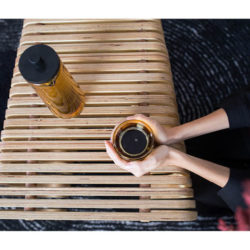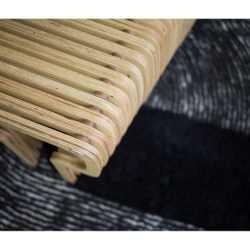HEIWA
Description
A Place for your personal moment of rest. The user has the opportunity to concentrate on something else, such as enjoying a coffee and the moment of rest. The user can incorporate these small moments as clues into their daily work and recharge their batteries.What is the Topic?
The starting point was a broad research into the history of coffee culture, starting with the first bean up to industrialization in Germany, including rituals and ceremonies in the field of eating and drinking culture. Coffee is not only used for food intake, but is also linked to a complex network of sensory perceptions, social interactions and relaxation. For most Germans and for many other nations worldwide, coffee is the start of the day and accompanies many through the workflow. It stimulates the cardiovascular system, improves physical performance and has a positive effect on the ability to concentrate. Enjoyment and rest help to cope with stress more easily, strengthen mental health and, above all, productivity. All too often, there is conscious enjoyment and the deliberate break in the stressful workday way too short, we hectically take a break, swallow our coffee and we find our heads anywhere but where we find peace. So what is intended as a break for relaxation becomes a "stimulus break". The principle of calm and mindfulness is reflected in the arrangement and formal design of the objects. Soothing colors and structures, haptic materials and surfaces, organic shapes and proportions give the user the necessary change of perspective and frame for a moment of calm. The "lost" time from taking a break enables the user to draw new strength, which leads to more efficient work. In the end, no time is wasted and there is less stress.
Why does it look like this?
The coffee culture history, ceremonies in connection with coffee and tea, German start-ups and the relation to coffee breaks, Zen Buddhism and Japanese architecture were diverse inspirations for this project.
What is special?
-Inexpensive, resource-saving manufacturing processes -Double-walled glass
What is new?
-The spatial context during the coffee break is essential. -The connection of different cultural characteristics.




